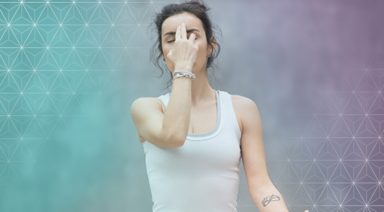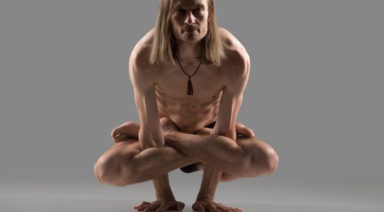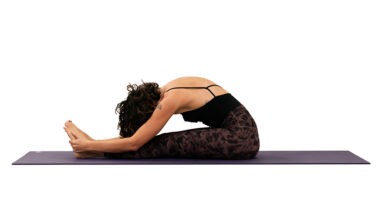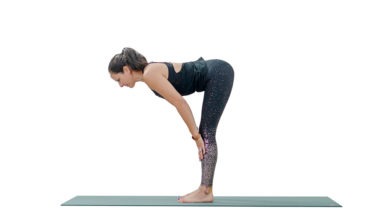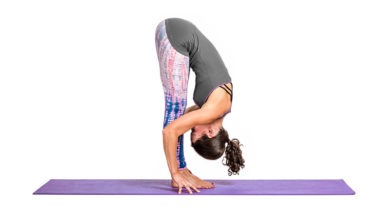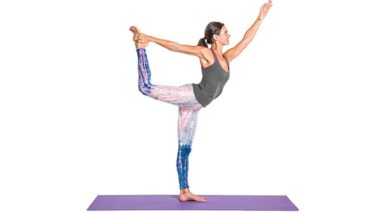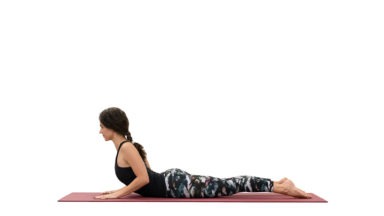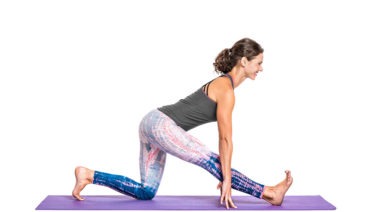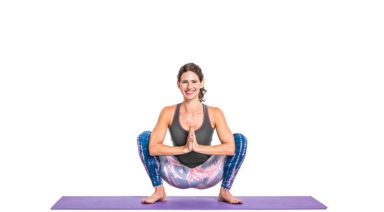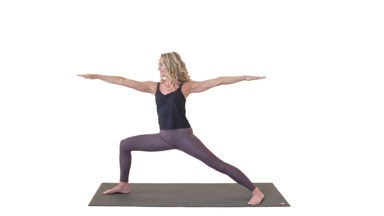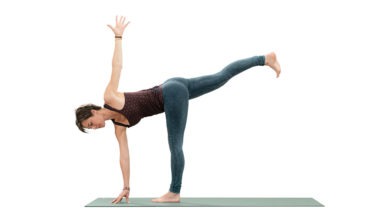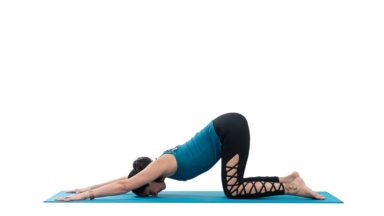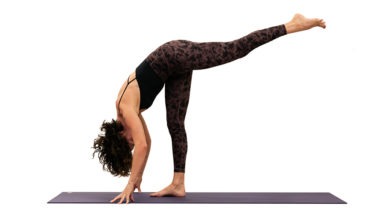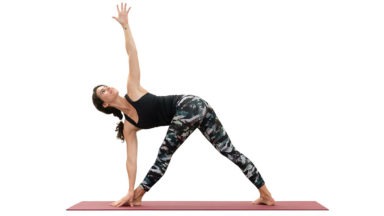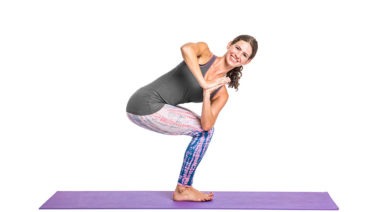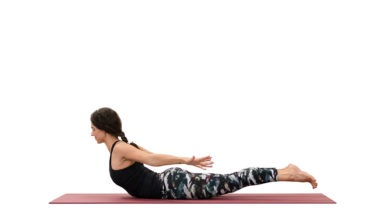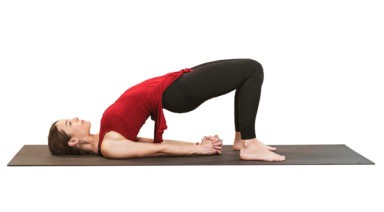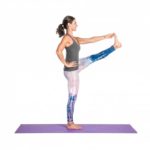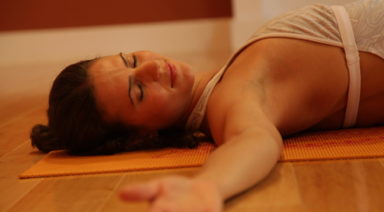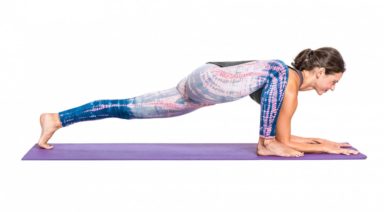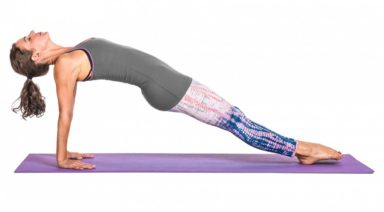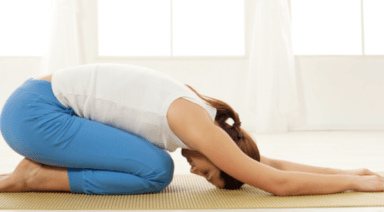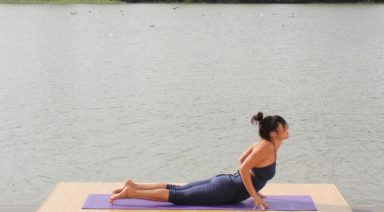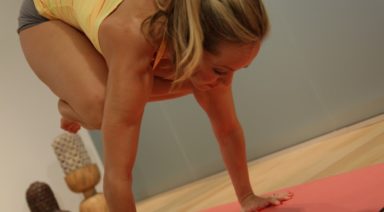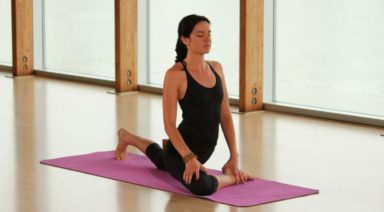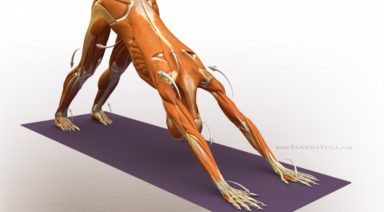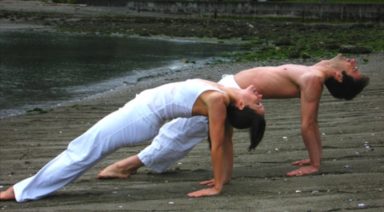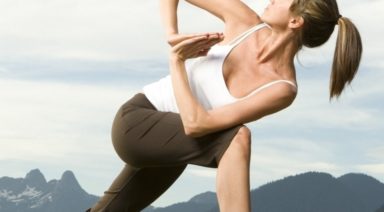Addiction Recovery Through Yoga
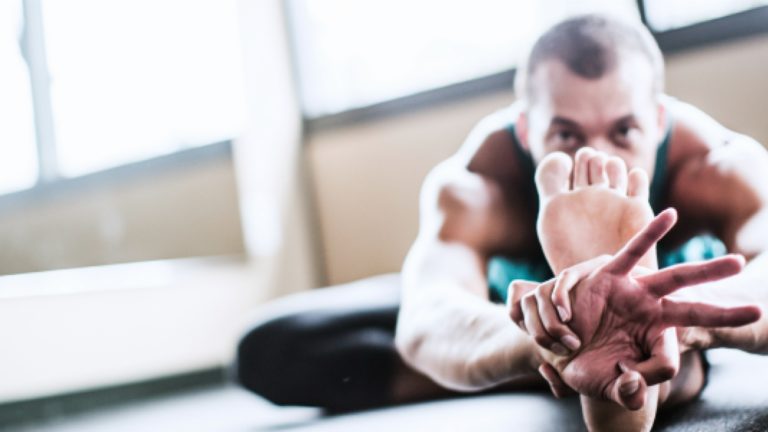
With all the images online of toned women in tights pulling themselves into pretzel-like poses, it’s easy to focus on the physical side of yoga, thinking of it as an exercise class that ends with a mini nap. But the ancient practice of yoga can also help with drug and alcohol addiction, diseases that affect millions of us in this fast-paced, modern world.
While yoga can be a powerful tool for personal transformation and recovery, many people write it off before even stepping onto a mat, saying they’re not flexible enough or they can’t afford the classes. Yet the mind-body connection, stress relief and personal growth that can occur through the regular practice of yoga can be just what a recovering addict needs. Yoga encourages a person to reconnect to their breath, body, mind and heart. Here are just a few ways yoga can help release the mind and body from the grips of drug and alcohol addiction.
Yoga Eases Stress
“It was such a crazy/stressful/hectic day… I need a drink” is such a common phrase in our culture, it’s easy to forget that there are healthy ways to cope with stress. Many addicts have become so dependent on their substance of choice, they’ve forgotten that movement or even just a few deep breaths can bring a real sense of calm to the day. And that moment of calm can lead to healthier choices as you move toward a sober life.
The benefits of mindful movement and breathing, which are at the center of many yoga classes, have been proven to increase overall health.
According to the American Institute of Stress, 20 to 30 minutes of deep breathing has been shown to help the body kick into a relaxation response, where stress levels drop and blood pressure decreases. “Deep breathing increases the supply of oxygen to your brain and stimulates the parasympathetic nervous system, which promotes a state of calmness,” according to an article on the organization’s website. “Breathing techniques help you feel connected to your body—it brings your awareness away from the worries in your head and quiets your mind.”
Nearly all yoga classes encourage students to consciously inhale and exhale, which brings peace to the mind and body, even as we move through a practice. If you commit even further, and regularly practice at home or at a studio, you might find yourself using deep breathing or a short yoga sequence to help you stay strong through a moment of temptation or stress.
This is especially important for addicts, as many suffer from post-acute withdrawal symptoms, or PAWS, in the early stages of recovery. These symptoms often include anxiety and mood swings. One study has shown that yoga directly helps to increase GABA, a neurotransmitter that aids in relaxing the nervous system, therefore improving your mood and decreasing anxiety.
Yoga Increases Self-Awareness
Addicts are often accused by their loved ones of being selfish. But devoting regular time to the kind of reflection that comes with yoga can be beneficial to those in recovery. More meditative types of the practice, like Yin Yoga, where there is little movement and just a few poses done in a single class, can create a meaningful space for really checking in with ourselves. While the questions that come to mind might not always be pleasant, these classes are set up as safe spaces for students to release emotions, and teachers are aware that their students might be struggling with all kinds of personal issues while in their studio. This type of contemplative yoga can help with anxiety, depression and even sleep issues. By dealing with some of the other factors that might be causing stress and unhappiness in your life, you might have more resolve or energy to commit to a recovery plan or time in a rehabilitation center.
Addressing the Roots of Addiction
Yoga is not superior in dealing with one addiction over another. Yoga begins to address the roots of a problem rather than the symptoms, making it a common tool among recovery from many addictions. If someone struggling with alcohol or drug addiction gets sober only to find him- or herself struggling with another addiction, such as food or gambling, yoga practices can be implemented to support in recovery from both addictions.
Yoga for General Wellbeing
Yoga can also be used as a tool to support general wellbeing regardless of addiction. For example, long deep breathing, or “yogic breathing,” has been shown to reduce levels of the stress hormone cortisol and increase stress resilience. Yoga can also be used to assist in dealing with trauma. According to Dr. Bessel van der Kolk, an expert in the field of trauma treatment, yoga may be more effective than many medications in treating PTSD. “Medication can be quite nice to sort of dampen some of the symptoms,” he states. “But in the end, people need to own their bodies, they need to own their physical experiences. And, in order to overcome your trauma, it needs to be safe to go inside and to experience yourself.”
Yoga asks you to show up for yourself. Although deep breathing can help relieve stress at any moment during the day, a physical yoga practice requires regularly carving out time for yourself. Even if you are just going to spend a few minutes stretching in your living room, you still must make the time to practice. As with any other type of physical exercise, you’ll see more benefits if you practice regularly. Yoga, for example, has been proven to ease chronic back pain and joint pain. Some studies have found that it can also help with mental health issues.
German researchers, for example, studied a small group of women who described themselves as “emotionally distressed.” Over a three-month period, they took two 90-minute yoga classes a week. At the end of the study, their stress, anxiety and overall health all improved. Similar studies have also shown the one-off benefits of even attending a single yoga class. The uniting factor in all of these cases? The participants showed up for themselves and attended a class. They might have had stressful days or felt anxiety about trying yoga or were plagued by depression, but they put all of that aside and spent the hour (or more) bending, breathing and stretching.
It’s easy to put off a yoga practice: to buy a mat or a DVD and let it go dusty. Or to attend a single class, but never step foot in the studio again. But the more you commit to yourself, and a regular mind-body practice, the more overall benefits you’ll begin to see and feel. A single healthy decision, like deciding to roll out your yoga mat, can change your focus for the day and encourage another healthy decision. Over time, those mindful moments will add up, perhaps leading to an overall more positive outlook and healthier lifestyle.
The Art of Surrender
Yoga requires us to surrender. The first of the 12 steps in Alcoholics Anonymous is “We admitted we were powerless over alcohol, that our lives had become unmanageable.” In a similar vein, yoga asks again and again that we drop everything that is not necessary in our lives. Most teachers will begin the class with a mind-clearing exercise and a short moment to set an intention. This helps us focus on the moment, and release all the other stresses in life. Similarly, some poses require surrender, as well.
Maybe there’s a complicated pose in class that you simply cannot twist your body into. That doesn’t mean you have to flop down on your mat or write the pose off for good. It simply means that accepting that today, that pose is not happening.
The same idea is true during some of the more “relaxing” poses. While your body might be still in a seated position, you may feel your mind racing. Again, yoga teaches us to simply surrender and to be present with who we are, where we are, right now. By engaging in a regular practice, we learn that acceptance comes with not being able to control the world around us but by allowing the world around us to exist as it is. By doing so we learn the art and gift of peaceful surrender.
In terms of learning to let go of expectations and limitations, yoga can be a boon for those who are recovering from addiction. In AA, the moment of surrender becomes “the firm bedrock upon which a happy and purposeful life is built.” The same is true in yoga: When we accept that a pose is out of our reach or that our minds cannot be quieted, we might finally find a moment of true freedom.
Yoga Breathwork for Quick Sinus Relief
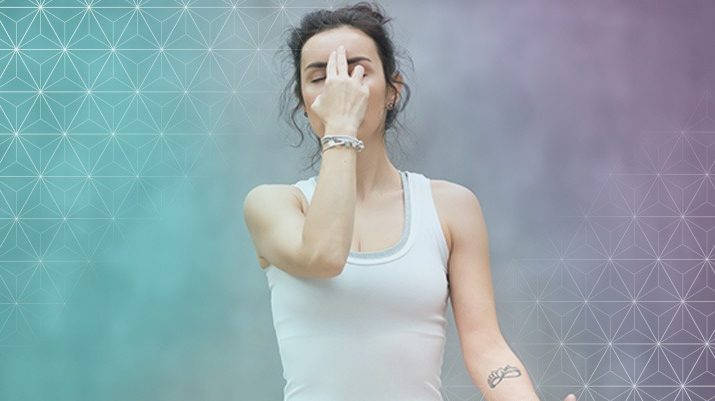
4 Minute Pranayama Kapalbhati Breathing Tutorial
Though it may seem counter-intuitive, breathing is another practice that can alleviate sinus discomfort. Try the following practices with a calm and relaxed demeanor, focusing on keeping your prana moving smoothly. You may wish to blow your nose, or better yet, use your neti pot before you try these exercises.
Belly Breathing
Lie on your back with your knees bent and your hands on your belly. Breathe deeply into the belly, focusing on expanding the belly like a buddha, then draw the breath and energy up through your ribs, chest and shoulders. Exhale the same way, deflating your belly, chest and shoulders, and squeezing all the air out of your belly. Find your own rhythm.
Calming Breath
Sit comfortably. Bring your right hand out in front of you, palm facing you. Fold your index and middle fingers into the palm. Place your ring finger on your left nostril to close it off. Breathe into the right nostril for two counts. Close off the right nostril with the thumb and hold the breath for two counts. Release the left nostril, exhale for two counts. Close off the left nostril and hold the breath for two counts. Try visualizing a square. If it feels uncomfortable to hold the breath, simply pause instead. Increase the count as you become comfortable, making sure that you are doing equal counts for each action.
Breath of Fire
In this practice, hold your hand over your navel, and practice forcefully exhaling out the nose repeatedly. Your belly should be pumping in and out. The force of the exhale will naturally draw in a new breath, so there is no need to inhale consciously. You may start this practice by gently panting, but it is important to eventually speed up the pace of this breath in order to stoke the “fire” of the breath.



